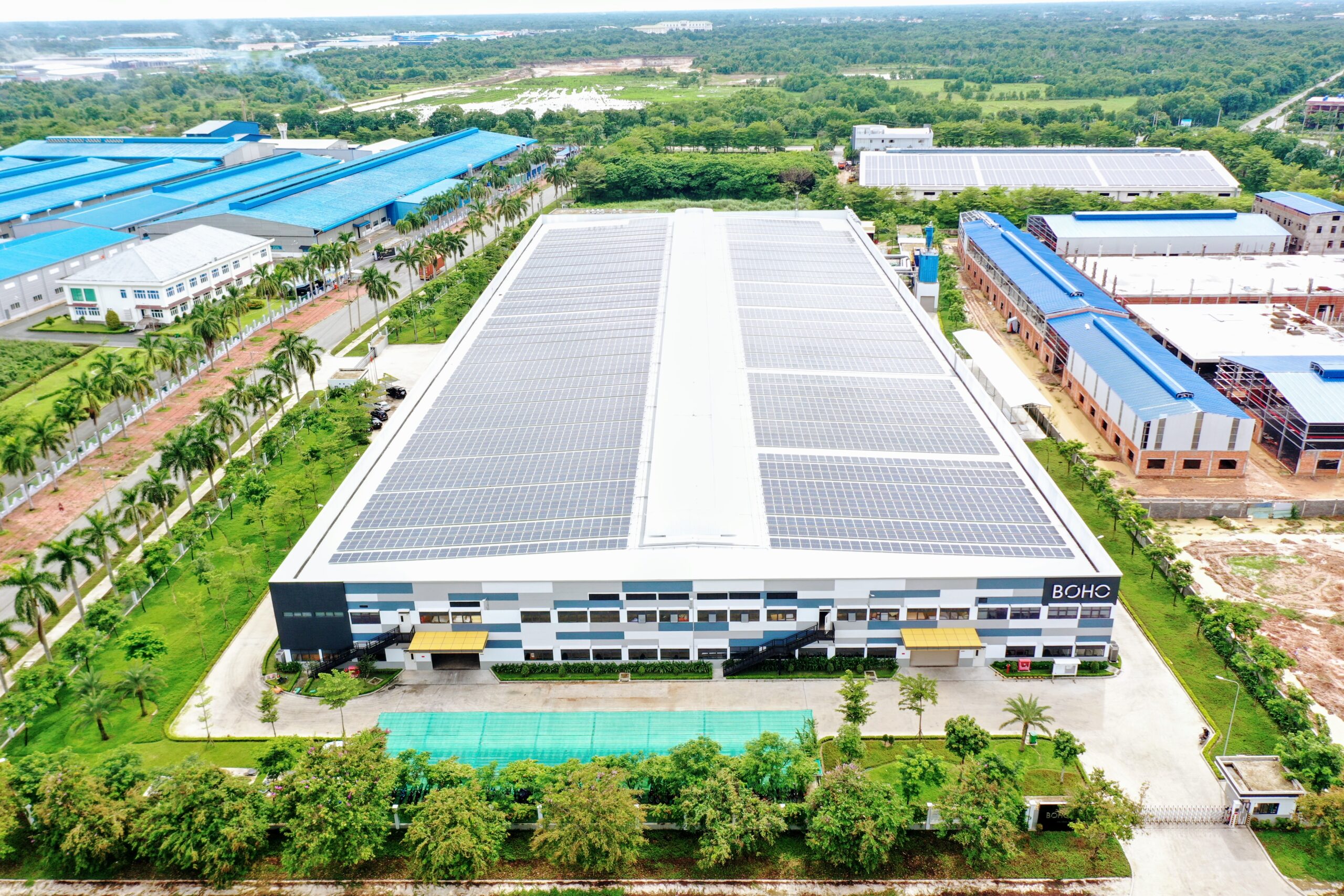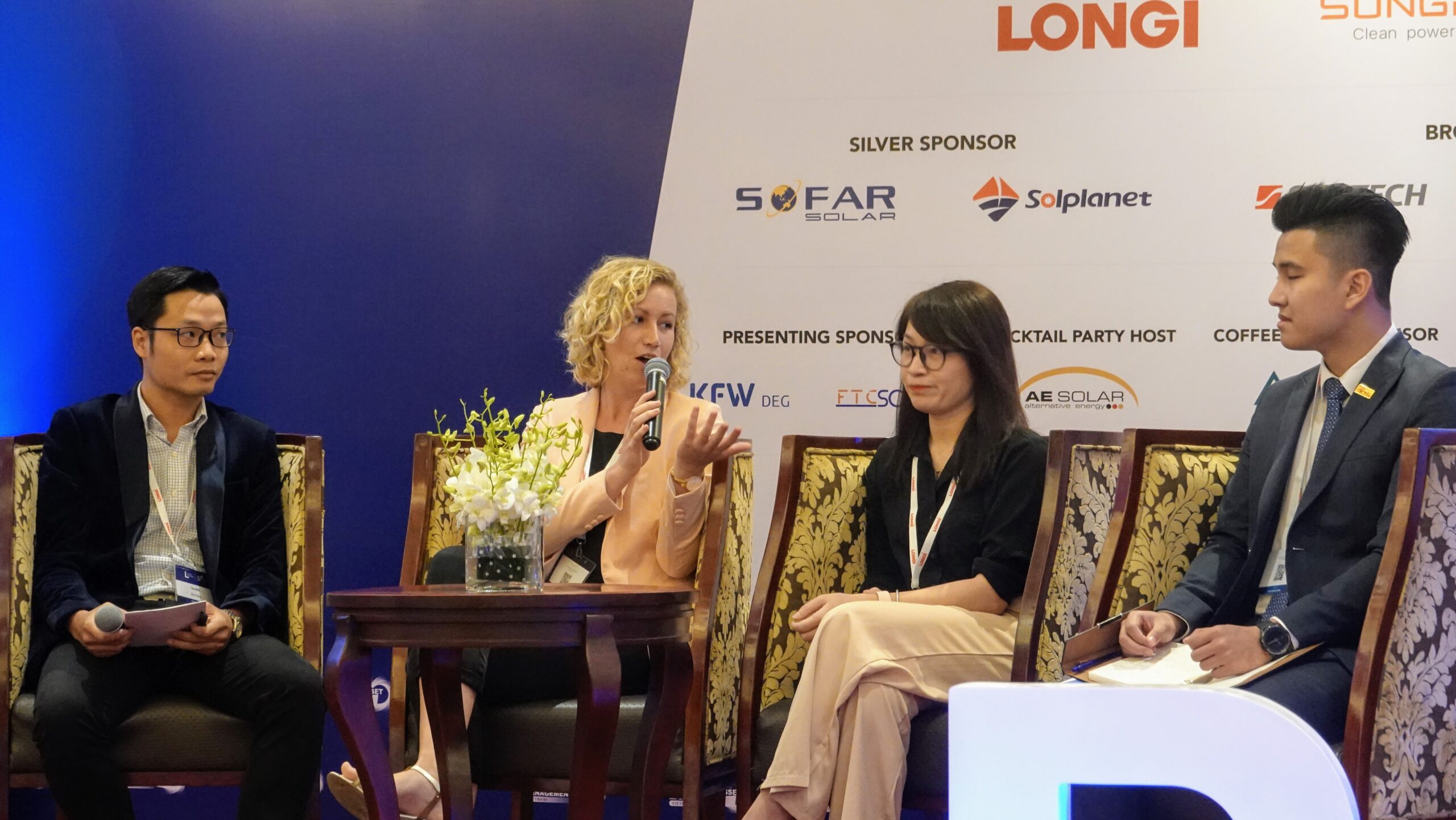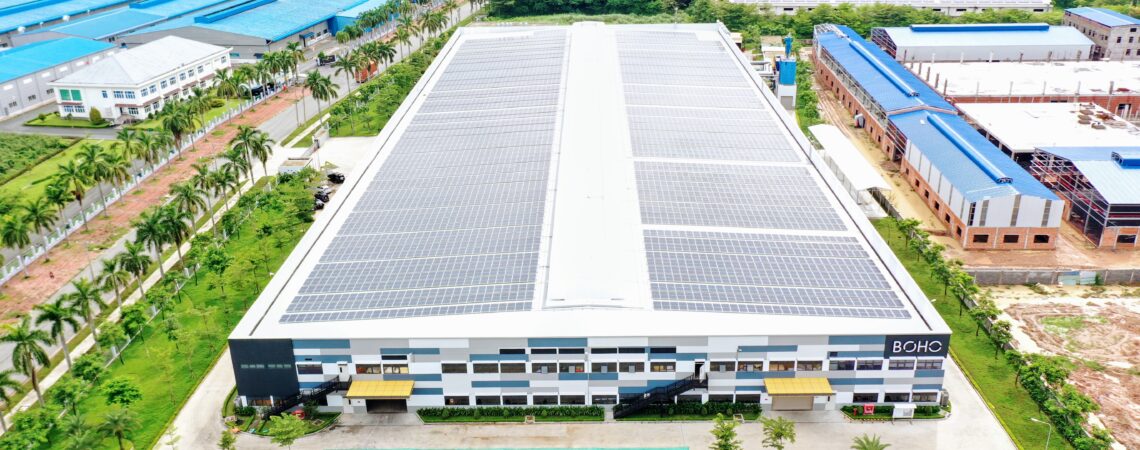This article is a part of Ms. Clothilde Deneve’s series of works for Sustainable Vietnam. Ms. Deneve currently works as Shire Oak International’s Sales Director.
Renewable energy has become a hot topic over the last few years, in Vietnam and all around the world, due to an accelerated focus on climate change and the race to Net-Zero.

Many actors around the world are working towards a balance between greenhouse gases produced and the amount removed from the atmosphere to ensure the Earth does not heat up. The transition to Renewable Energy can support this balance and impact positively the environment, society, economy and governance.
To put it all in context – Vietnam is one of the most vulnerable regions to climate change.
But before starting the conversation on Renewable Energy and low carbon sources of power, it is important to understand what both terms mean:
Defining Renewable Energy & Low Carbon
There are four main types of low–carbon energy:
- Wind
- Solar
- Hydro
- Nuclear power
These sources generate power by releasing little amounts of carbon emissions.
The first three are renewable, which means they come from a source that is free and abundant, and therefore not depleted when used.
Some renewable sources of power may still have an impact on the environment. Hydropower, for instance, when coming from big dams can disrupt the natural ecology of rivers, damage forests, and biodiversity.
Since the Paris Agreement, adopted by 196 parties in 2015, governments all over the world are changing their policies in order to limit global warming below 2°C, preferably to 1.5 °C, compared to pre-industrial levels. Under the pressure of governments and consumers, big international companies are committing to reduce their carbon footprint.
Many global sustainable initiatives have emerged, such as RE100 – it is a global corporate Renewable Energy initiative bringing together large businesses committed to 100% renewable electricity.
Renewable Energy in Vietnam
In Vietnam, Renewable Energy is answering two big problems:
1. Adding sources of power without damaging the environment:
The country is facing a large increase in demand for power every year mainly due to its fast economic growth and high industrialization.
2. Satisfying multinational enterprises (MNE)’s demands for green power:
By giving access to Renewable Energy, the Vietnamese government is giving the resources MNEs need in order to comply, and to have their supply chain comply with the global corporate policy to lower carbon footprint, hence increase the number of MNEs moving their production line to Vietnam.
Therefore, the Vietnamese government has developed over the last few years strong policies to support the development of Renewable Energy projects and to attract investments.
The objective of Vietnam, the outlined Draft Power Development Plan VIII (DPD 8) to be published sometime in 2021, is that by 2030, 29% of the electricity should come from wind, solar, and Renewable Energy.
Renewables made up 13% of power in 2020.
The ‘Hotness’ of Solar
The Renewable Energy market in Vietnam, especially Solar Energy, has become one of the hottest transitions in the world in only a few years. Vietnam has become the world’s third-largest solar market in 2020.
This is especially jaw-dropping considering that Vietnam had almost no solar installation before 2017.
The main regulations that helped this incredible development are the Feed-in-Tariffs that came into action for the first time in 2018 (FIT1) and then in April 2020 (FIT2).
The Feed-in-Tariff is the tariffs paid by EVN, the national electricity provider, for each kWh injected into its grid by Solar projects owners, under a 20 years contract.
FIT2 was applicable for projects built before the end of 2020. This created an enormous amount of project installation: Over 9GWp of projects were installed in Vietnam in 2020, from only 378MWp in 2019. Amongst this 9GWp, 6GWp were installed in December!
This means the country has far exceeded the original target of 1 GW by the end of 2025.
The installed capacity exceeded expectations by so much, that the government has to press the pause button for a bit, as EVN is facing pressure to assimilate so many new sources of electricity into its grid.
The Feed-in-Tariff has not been renewed yet, and all solar stakeholders are waiting for the next regulation to be announced.
It’s Getting Hotter
Despite the current lack of regulation in 2021, the Solar trend in Vietnam is not about to stop, as more and more foreign investments are coming to try and get their share of the pie.

The next step for Vietnam’s development in Renewable Energy is the highly anticipated DPPA (Direct Power Purchase Agreement): allowing companies to buy renewable electricity generated off-site (from a wind or solar farm). Once the DPPA is available in the country, multinationals companies will finally have solutions available to power 100% of their activity with Renewable Energy. This should allow the market to develop tremendously, without putting financial on EVN (electricity national provider) or on the government.
But such incredible development of the renewable market does not come without challenges and Vietnam will have to face a number of issues in order to keep the market growing sustainably.
The biggest one to date is linked to the infrastructures: Vietnam’s electricity grid is already not strong enough to absorb all the Renewable Energy generated and injected into its lines during the hottest hours of the day.
Investments will be necessary to improve the grid’s capacity to keep up with the growing energy needs of Vietnam, and its appetence for renewables!


